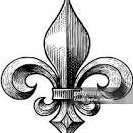Bubbler Irrigation, Has Anyone Tried It?
-
Recently Browsing 0 members
- No registered users viewing this page.
Announcements
-
Topics
-
-
Popular Contributors
-
-
Latest posts...
-
2
UK King Charles sends urgent warning in 80th anniversary address
IAnd I thought the queen consort was thrown out of the royal family so I heard. -
2
Padang Besar border 'bounce' report August 2025
Four airlines Bangkok to Penang multiple daily flights Shuttle trains from Had Yai to Padang Besar Malaysia leave on time and dont stop ' way short of the border'. They stop at the platform next to immigration. The trains from Padang Besar leave when everyone has cleared immigration. Usually ontime week days. Not on time weekends and holidays. -
11
BA pilot left cockpit door open ‘so family could see him
Pilots, with more than a few years of service, usually know what is permissible and what is not, so this sort of news is surprising. I've been on a few flights (both 744 upper deck on UA and LH so quite a few years ago) where it is the last flight for a particular pilot, and there is family on board and they trek onto the flight deck for a few minutes. And you usually get a water cascade on arrival. Hmm. -
58
Retired expat out there who has been issued with a TIN number?
A nice chap processed my tax claim, with very few questions, he flew through it as only a civil servant can do. He doubtless wrote "NA" to most questions. As confirmed by many posters here already a Thai Tax TIN is not obligatory, and I had no record of my UK tax number, just a genuine letter from the UK Tax man saying I owed nothing. I visited my UK tax office before I left to ensure I'd paid all UK tax due, and got them to confirm it in a letter as proof. That was enough for me at this end. -
142
‘Putin clearly won’: Pundits say meeting was ‘bad for Americans’
world's #1 pariah got a free pass to the international community show thanks to Trump, Putin was all gloom about it and the Russians back home will venerate him for the trip They even claimed he wore a 'light exoskeleton' as well as thick-platform shoes to overcome his 'Napoleon complex' and minimise his height difference with the US president. Putin shaking his head and shouting over journalists as they asked when Ukraine war would stop https://www.msn.com/en-xl/news/other/putin-shaking-his-head-and-shouting-over-journalists-as-they-asked-when-ukraine-war-would-stop/ar-AA1KCYRE?ocid=msedgdhp&pc=LCTS&cvid=23a714cf11b44993a582b6d1134c0d8f&ei=47 -
67
Traffic Pattaya's Helmet Dilemma: German Tourists Weigh In
What I see is foreign tourists looking very happy to be able to adjust to the Thai culture and ignore traffic rules on the roads...
-
-
Popular in The Pub









Recommended Posts
Create an account or sign in to comment
You need to be a member in order to leave a comment
Create an account
Sign up for a new account in our community. It's easy!
Register a new accountSign in
Already have an account? Sign in here.
Sign In Now